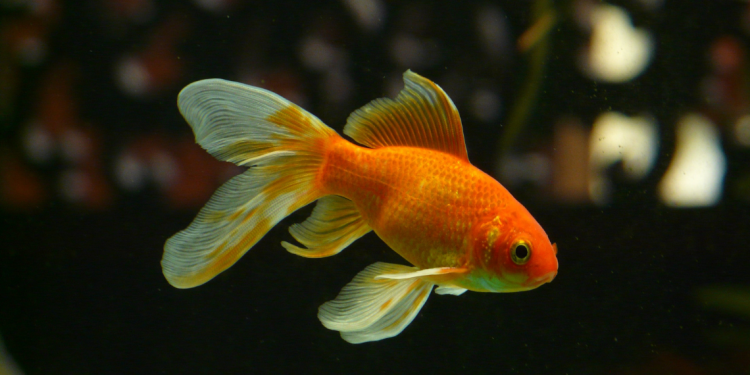Can a Goldfish live in Alcohol? Alcohol is said to be dangerous for health, right? Then how comes goldfish are allowed to live in it when humans aren’t even allowed to drink it until they turn 18? Is this unfair to humans or are fish lives considered skimpier and not important enough to save?
Before we move on, I want to clear one misconception. A goldfish living in alcohol does not mean you take one out of its water bowl and place it into one full of alcohol. Rather, it means that goldfish produce their own alcohol which they survive in. This allows them to live longer than they should have.
So the next time a friend of yours brags about his goldfish that made it past the 2 month-anticipated death line, you know that is nothing to brag about.
Specifications about Goldfish
The most commonly known goldfish, the Carassius Gibelio, is a favorite pet of most human beings. It was a bright orange fish discovered many centuries ago, and still, the most commonly found and most cheaply bred goldfish. With time, other types were also discovered and now goldfishes come in all colors white, orange, red, brown, and black.
For many years, it was believed that goldfish had derived from the Crucian Carp discovered in 1758. Now, they are both considered each other’s cousins.
Following are a few specifications of goldfish:
| Life Span | 10 to 20 years |
| Size | 4 to 12 inches |
| Color | Yellow, orange, red, black, and white |
| Kingdom | Animalia |
| Phylum | Chordata |
| Family | Cyprinidae |
| Class | Actinopterygii |
| Order | Cypriniforms |
The normal life span of a goldfish
Usually, a goldfish can live up to 15 years. However, it is not surprising to see a 20-year-old goldfish, and here is why. Goldfish are compatible with waters of different temperatures. And if the temperature decreases to below their compatibility, they can still survive in it for a few months to a whole year.
Can a goldfish live in alcohol?
As mentioned earlier, a goldfish can live in alcohol. But this doesn’t mean they prefer to do so, rather they produce their own alcohol to survive.
How do goldfish produce alcohol?
According to scientists from different universities, goldfish do not produce alcohol until their life is threatened. And the only other thing threatening their life than larger fish is icy cold water. In icy cold waters, the oxygen level decreases to below zero, a habitat in which even human life is impossible.
As an alternative, goldfish start to break the carbohydrates present in their bodies. However, these carbohydrates come with the production of lactic acids, which are highly poisonous for fish. In order to survive the icy cold water and lack of oxygen, plus the presence of lactic acids, fish turn these acids into alcohol which serves as an environment for them to live in.
When scientists studied this surprising discovery in detail, they came to know that goldfish have two different sets of enzymes that help with the breaking of carbohydrates. One set is the same as any other species, while the other is activated only when the goldfish face an environment with insufficient oxygen.
Does this mean goldfish get drunk?
Surprisingly or unsurprisingly, the only thing common between a human and a goldfish is the fact that they both get drunk after taking in alcohol. In fact, a goldfish get drunk from about 55 millimeters to 100 millimeters, which is 5 times more than the drunk driving limit in many countries. Well, it is a good thing goldfish don’t drive, right?
How long can goldfish live in alcohol?
Generally, a goldfish’s life can be extended five to six months more after producing alcohol. However, even a goldfish will die if it lives in icy cold water for more than that. Even though the alcohol doesn’t cause the fish’s death, the longer it is exposed to harsh environments, the more will it have to produce alcohol, and the more it will use its energy. Eventually, it will run out of fuel and die.
Beginning of the discovery
Researchers from the University of Oslo and the University of Liverpool have taken on them to study this complicated process. During this discovery, Dr. Michael Berenbrink said about goldfish,
“During their time in oxygen-free water in ice-covered ponds, which can last for several months in their northern European habitat, blood alcohol concentrations in crucian carp can reach more than 50 mg per 100 milliliters, which is above the drink drive limit in these countries.” He then added, “However, this is still a much better situation than filling up with lactic acid, which is the metabolic end product for other vertebrates, including humans, when devoid of oxygen.”
According to Dr. Cathrine Elisabeth Fagernes,
“This research emphasizes the role of whole genome duplications in the evolution of biological novelty and the adaptation of species to previously inhospitable environments. The ethanol production allows the crucian carp to be the only fish species surviving and exploiting these harsh environments, thereby avoiding competition and escaping predation by other fish species with which they normally interact in better-oxygenated waters.” She said, “It’s no wonder then that the crucian carp’s cousin the goldfish is arguably one of the most resilient pets under human care.”
Conclusion
Who knew such little creatures were more resilient than human beings might ever be? Being able to live in icy cold waters is one thing. Producing alcohol in place of oxygen to survive is a whole new level that humans might never be able to reach. So, respect a goldfish.












